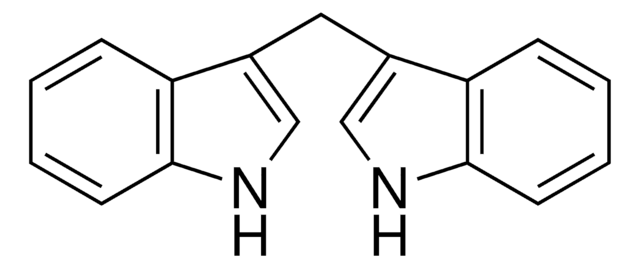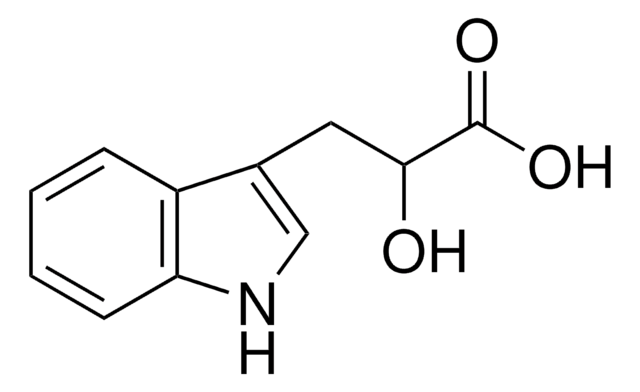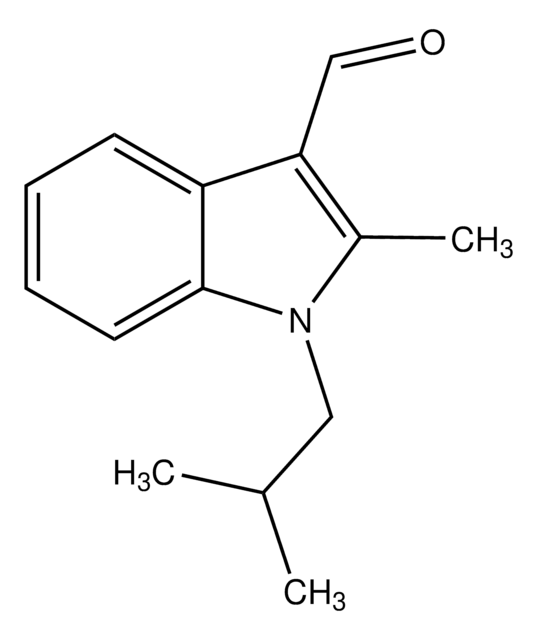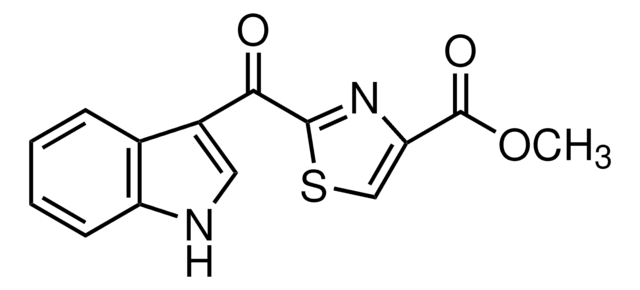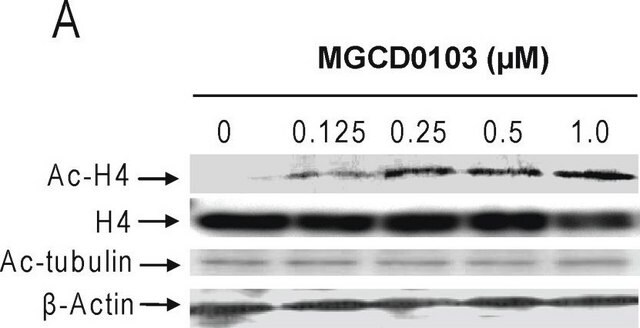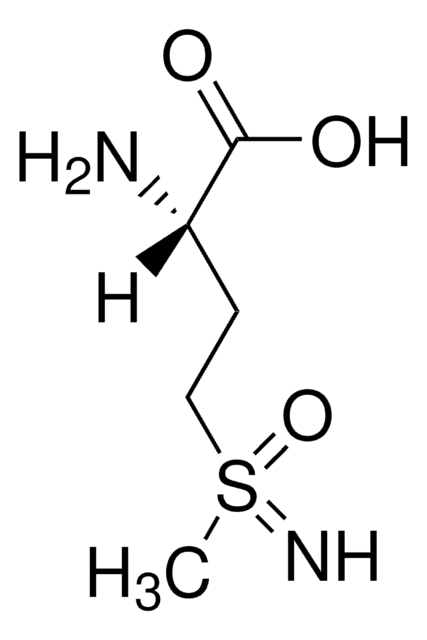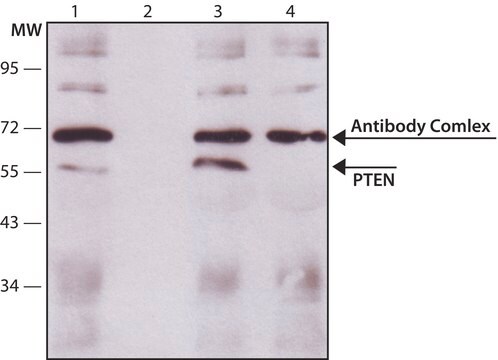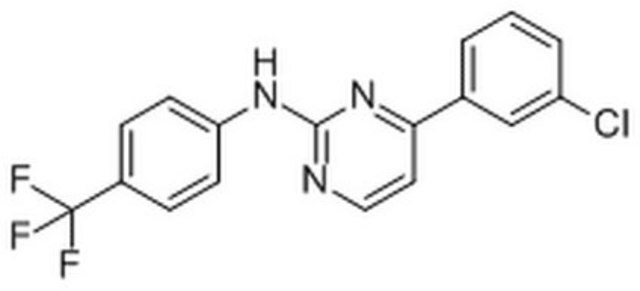I7256
Indole-3-carbinol
Synonyme(s) :
3-Indolemethanol
Se connecterpour consulter vos tarifs contractuels et ceux de votre entreprise/organisme
About This Item
Formule empirique (notation de Hill) :
C9H9NO
Numéro CAS:
Poids moléculaire :
147.17
Numéro CE :
Numéro MDL:
Code UNSPSC :
12352005
ID de substance PubChem :
Nomenclature NACRES :
NA.25
Produits recommandés
Niveau de qualité
Pf
96-99 °C (lit.)
Température de stockage
2-8°C
Chaîne SMILES
OCc1c[nH]c2ccccc12
InChI
1S/C9H9NO/c11-6-7-5-10-9-4-2-1-3-8(7)9/h1-5,10-11H,6H2
Clé InChI
IVYPNXXAYMYVSP-UHFFFAOYSA-N
Vous recherchez des produits similaires ? Visite Guide de comparaison des produits
Description générale
Indole-3-carbinol is a novel secondary plant metabolite produced in cruciferous vegetables, such as cabbage, cauliflower and brussels sprouts.
Application
Indole-3-carbinol has been used for encapsulation with poly-lactic-co-glycolic acid (PLGA), to study its in-vitro anti-cancerogenic effects on breast adenocarcinoma epithelial (MCF7), colon adenocarcinoma epithelial (Caco2), prostate carcinoma epithelial (PC3) cells. It has also been used as a cytochrome P4501A (CYP1A) inducer.
Actions biochimiques/physiologiques
Indole-3-carbinol (I3C) activates aryl hydrocarbon receptor (AhR) and induces G1 cell cycle arrest and apoptosis. Thus, it acts as a potential anti-cancer agent. In addition, it induces estradiol metabolism by stimulating cytochrome P450 enzymes. Therefore, I3C is considered to be a potent chemotherapeutic for various types of cancer including, breast, prostate, colon cancer, and leukemia.
Inhibits cancinogenesis at the initiation stage. Has be shown to inhibit carcinogenesis in several animal species, but it enhances tumor incidence if administered at a post-initiation stage. Found in cruciferous vegetables.
Mention d'avertissement
Warning
Mentions de danger
Conseils de prudence
Classification des risques
Eye Irrit. 2 - Skin Irrit. 2
Code de la classe de stockage
11 - Combustible Solids
Classe de danger pour l'eau (WGK)
WGK 3
Équipement de protection individuelle
dust mask type N95 (US), Eyeshields, Gloves
Faites votre choix parmi les versions les plus récentes :
Déjà en possession de ce produit ?
Retrouvez la documentation relative aux produits que vous avez récemment achetés dans la Bibliothèque de documents.
Les clients ont également consulté
Aromatic hydrocarbon responsiveness-receptor agonists generated from indole-3-carbinol in vitro and in vivo: comparisons with 2, 3, 7, 8-tetrachlorodibenzo-p-dioxin.
Bjeldanes LF, et al.
Proceedings of the National Academy of Sciences of the USA, 88(21), 9543-9547 (1991)
Jing-Ru Weng et al.
Cancer letters, 262(2), 153-163 (2008-03-04)
During the course of oncogenesis and tumor progression, cancer cells constitutively upregulate signaling pathways relevant to cell proliferation and survival as a strategy to overcome genomic instability and acquire resistance phenotype to chemotherapeutic agents. In light of this clinical and
G S Bailey et al.
Journal of the National Cancer Institute, 78(5), 931-934 (1987-05-01)
Indole-3-carbinol (I3C), a natural constituent of cruciferous vegetables, is an inhibitor in several experimental animal models of carcinogenesis by polynuclear aromatic hydrocarbons or aflatoxin B1 (AFB1) when administered prior to or during carcinogen exposure. For assessment of the postinitiation effects
H L Bradlow et al.
Annals of the New York Academy of Sciences, 889, 204-213 (2000-02-11)
Previous studies from this laboratory have suggested that 2-hydroxyestrone is protective against breast cancer, whereas the other principal metabolite, 16 alpha-hydroxyestrone, and the lesser metabolite quantitatively, 4-hydroxyestrone, are potent carcinogens. Attempts to directly decrease the formation of the 16-hydroxylated metabolite
PLGA encapsulation and radioiodination of indole-3-carbinol: investigation of anticancerogenic effects against MCF7, Caco2 and PC3 cells by in vitro assays
Yildiz G, et al.
J. Radioanal. Nucl. Chem., 311(2), 1043-1052 (2017)
Notre équipe de scientifiques dispose d'une expérience dans tous les secteurs de la recherche, notamment en sciences de la vie, science des matériaux, synthèse chimique, chromatographie, analyse et dans de nombreux autres domaines..
Contacter notre Service technique
